| St. Augustine, Florida Page2 | ||
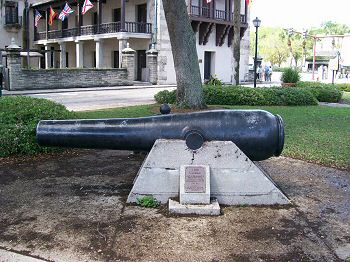 |
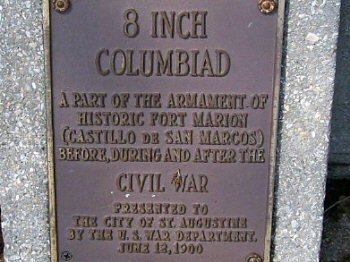 |
|
|
(3-2007) Plaza de Constituccion/Old
Market Square William Bozic photo |
(3-2007) Detail of Columbiad display William Bozic photo
|
|
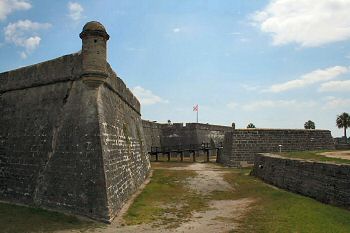 |
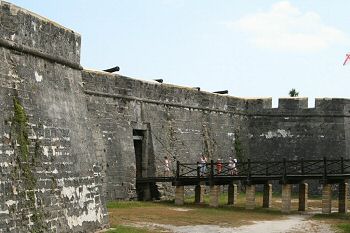 |
|
|
(7-2008)
Enlarge This is a view of the
south or city face of the Castillo de San Marcos in St. Augustine. This
historic fortress is the oldest masonry fort in the United States. The
Spanish began construction on the fort in 1672 and the Castillo took
decades to complete. When Florida was turned over to the United States in
1821, the Castillo was renamed Fort Marion. It was seized by state forces
in January of 1861 |
(7-2008)
Enlarge This is a view of the
dry moat, drawbridge and sally port of the Castillo de San Marcos. Despite
its age, the fort was described by Union naval officers as one of the
strongest positions on the lower Atlantic seaboard. The fort remained an
active military post until the 20th century and was occupied by both
Confederate and Federal forces during the Civil War |
|
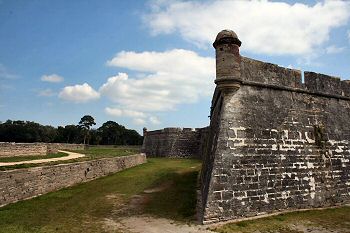 |
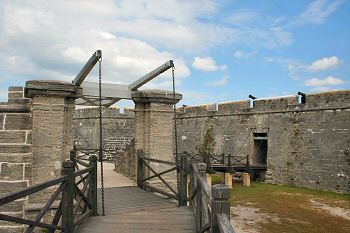 |
|
|
(7-2008)
Enlarge The Castillo was
designed by the Spanish to present a multi-tiered or layered defense to
attacking infantry. In addition to its massive stone walls, the fort
included a dry moat that could be flooded in times of dire emergency, a
covered way, and an outer ring of stone-backed earthworks. The fort was
besieged twice by the British during the 18th century. One of these
attacks lasted for more than 50 days, but the Castillo held out. In a
nearly month-long bombardment it was found that the stone walls (made of
coquina, a local rock) actually absorbed cannon shot without shattering |
(7-2008)
Enlarge This is a view of the
dual drawbridges leading to the fort's only entrance. Part of an
impressively designed system of defense intended to make the Castillo
virtually impregnable to an infantry assault, the drawbridges were
strongly protected and could only be accessed by breaching the city walls |